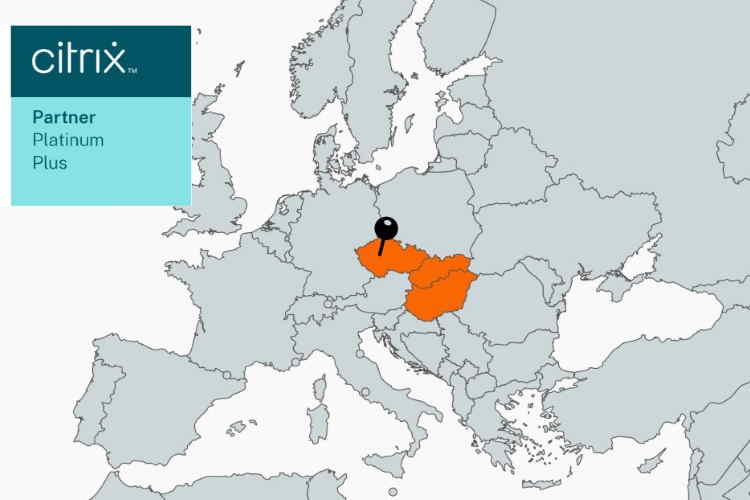Cloud Encyclopedia: a quick guide to the cloud
Awareness of cloud services, their purpose, advantages and disadvantages is often superficial and fragmented in our region. That is why Cloud Encyclopedia - a series of articles by Orbit tribal members that will reliably introduce anyone interested in the Czech market to the issue of cloud IT services. Cloud services as ORBIT we have been intensively involved for years. We apply our thirty years of experience in this modern technological aspect of our customers' IT lives. Every year we implement several large and small IT change projects that are closely related to the cloud environment (for example, this).
During our daily contact with our customers, we became aware of a previously unheard demand for a certain guidebookif you want guides to the cloud world. Many managers and IT specialists of Czech organizations find it difficult to find time and reasons for self-study of lengthy English articles (not to mention obtaining certifications).
The aim of this series is not to present all cloud services in detail (after all, YouTube is full of detailed material), but help readers to understand the services, understand their purpose and provide an expert perspective on the options offered (at least as far as the services of the major providers in our region, i.e. Microsoft and Amazon, are concerned).
Chapter 1
What is cloud computing
What exactly is the cloud? What are the advantages and disadvantages of the cloud, and how does the cloud differ from virtualization?
Martin Gavanda POST
Chapter 2
Do you know which cloud is which?
There is no cloud like the cloud. What is the difference between the different types of clouds? Let's see some illustrative examples.
Martin Gavanda POST
Chapter 3
How ripe am I for the cloud?
How do customer cloud maturity levels differ? What is it, what is it good for, and how do you assess it?
Kamil Kovář POST
Chapter 4
Building the foundations: infrastructure as a service
Please VaaS, what is IaaS? Learn about the benefits and pitfalls of Infrastructure as a Service.
Jakub Procházka POST
Chapter 5
Let's focus on applications: Platform as a Service
What are platform services or PaaS, what are the most used ones and why use them in the cloud?
Kamil Kovář POST
Chapter 6
Serverless computing: it can be done without servers!
How does serverless computing work? What are its advantages, disadvantages and how does it differ from PaaS services?
Martin Gavanda POST
Chapter 7
Application assessment: how to get applications into the cloud?
Learn the basic steps to easily and efficiently migrate your applications to the cloud.
Lukas Hudecek POST
Chapter 8
Preparing your cloud environment: how to do it?
How to systematically proceed when you need to prepare your cloud environment for workload and application migration?
Lukas Hudecek POST
Chapter 9
Tame costs in the cloud: subscriptions, billing, services
Which decisions have a major impact on the price of cloud services? You can turn cloud costs to your advantage.
Jakub Procházka POST
Chapter 10
Untangling cloud networks
Enterprise network architecture in the cloud can be complex. How not to get entangled in cloud networks?
Jakub Procházka POST
Chapter 11
Tagging in the cloud
Tagging matters! But which tags make sense and how to get the most out of using them in the cloud?
Kamil Kovář POST
Chapter 12
Cloud backup
Your data in the cloud is not automatically protected. Why, when, what and most importantly how to back up in the cloud?
Jakub Procházka POST
Chapter 13
Audit logs in the cloud:
Who was that?!
Why honestly store and process cloud audit logs and which tools to use to analyze them?
Martin Gavanda POST
Chapter 14
Deployment pipelines: let's do it in the cloud!
How can automation, the public cloud and especially AWS and Azure help us build a deployment pipeline?
Kamil Kovář POST
Chapter 15
How to encryption keys and application secrets in the cloud
Which tools can we use when working with encryption keys and application secrets in the cloud, and which principles should we honour?
Martin Gavanda POST
Chapter 16
FINOPS - money first
How to achieve efficient use of resources in a dynamic environment such as the public cloud? FinOps is the answer.
Jakub Procházka POST
Chapter 17
Fault injection or break it yourself!
If it works, don't touch it? No. You have to preemptively tinker with the IT architecture and break it down to withstand real incidents.
Kamil Kovář POST
Chapter 18
Containers in the cloud - how to use them in the cloud?
From Docker and tools like Swarm, Kubernetes or OpenShift to application containerization and containers in the cloud. How to do it?
Kamil Vrátný POST
Chapter 19
High availability of services in the cloud - how to do it?
How big should cloud availability be? How to achieve it, what to build it from, and what all needs to be taken into account?
Lukas Hudecek POST
Chapter 20
New standard contractual clauses when going to the cloud
When you use a supplier outside the EU, you need to secure your personal data. How can standard contractual clauses help you?
Jan Kubicek POST
Chapter 21
If in the cloud, then DevOps.
Why?
It's being talked about and written about a lot now. How does DevOps apply to maintaining on-premise infrastructure and how does it apply in the cloud?
Lukáš Křížek POST







